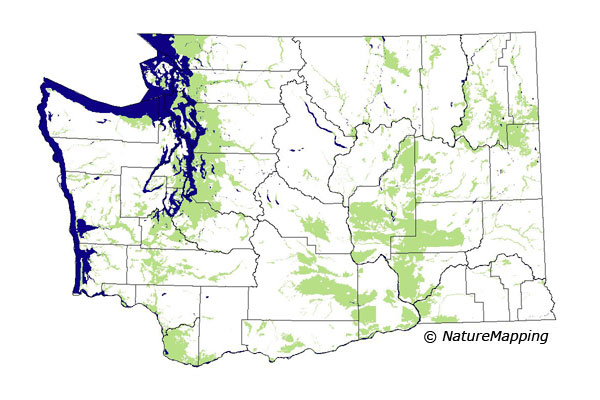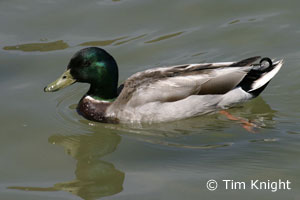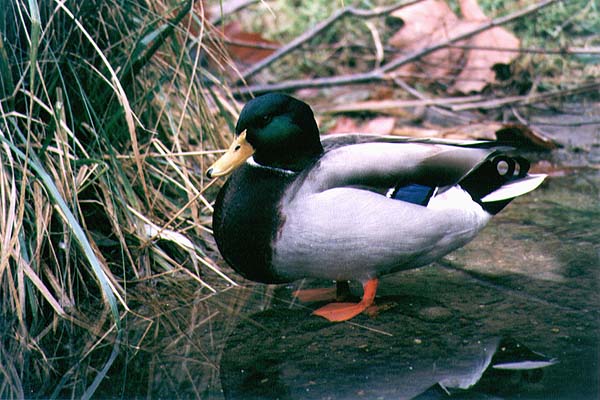|
Mallard (Anas platyrhynchos) 
What they look like: Both the male and the female have bright orange feet and a purple-blue rectangle of color where the wing joins the body.
It is easy to tell the male from the female. The male has brownish feathers and a green colored head. He also has a white collar around the neck, a brown breast, and curly tail feathers.
Body Length: 20-28 inches. Where they live: The mallard is common in North America, Northern Central America, much of Europe, Asia, and Africa. In summer, the mallard can be seen in Alaska, Canada and the northern United States.
Mallards are found on shallow bodies of fresh water, on lakes, marshes and even flooded fields.
What they eat: They like to eat grass seeds, pond weeds and other water plants. They also eat insects, small fish, tadpoles, freshwater snails, fish eggs, and even frogs. Mallards feed by "dabbling" and upending, meaning that they tip their bodies into water, bill first, with tail in the air to reach below the surface with its bill. They can then reach plants that grow in the shallows of ponds, lakes, streams and swamps.
photos by Tim Knight Animal silhouettes available to purchase » Home | About Us | How to Participate | Biodiversity Modules | Projects | Maps | News | Resources |





